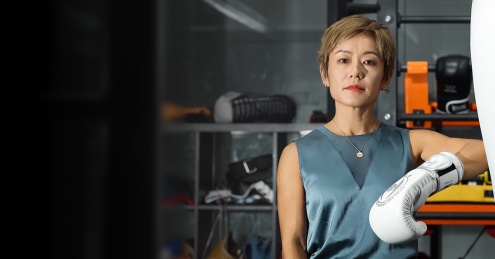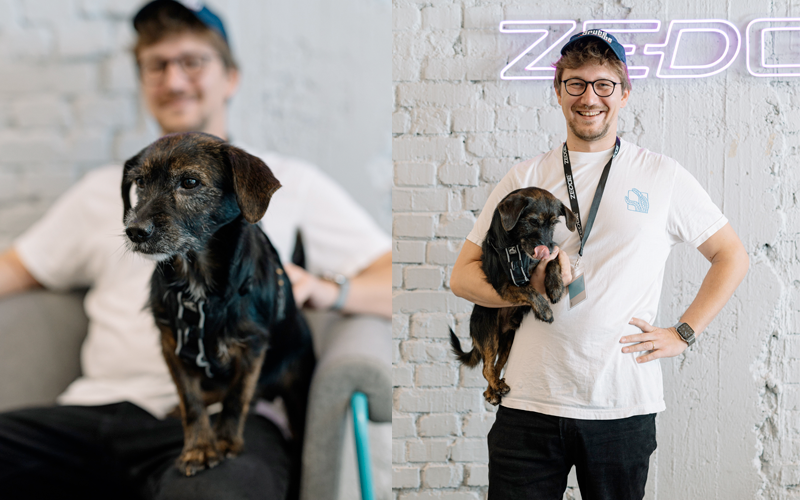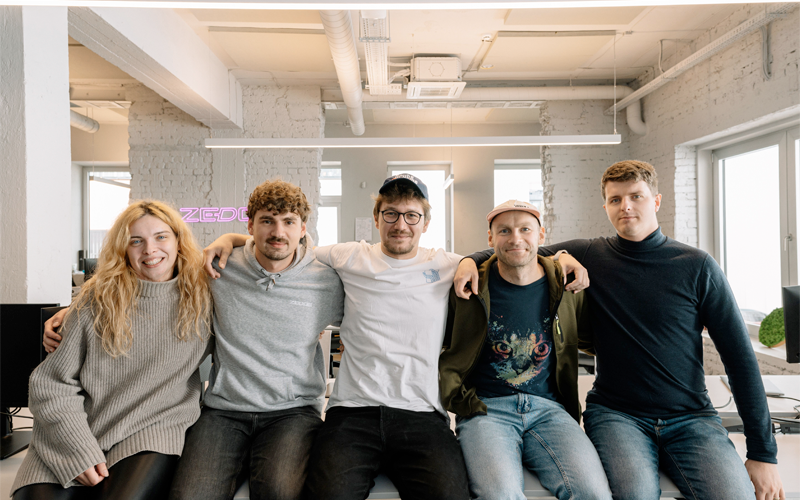Q&A with Ignas
Ignas Danielius is the Senior Director of Analytics and Ad Operations at ZEDGE. Ignas is a key player in the team, driving revenue growth and fine-tuning ad strategies. His journey through marketing, brand analysis, and project management has equipped him with a valuable skill set for app monetization. Ignas is dedicated to delivering results, using his expertise to boost ad revenue and create exceptional user experiences.
How would you describe Zedge to someone who has never heard of the app?
Zedge builds digital marketplaces and friendly competitive games around content people use to express themselves. Our leading products include Zedge Ringtones and Wallpapers, a freemium digital content marketplace offering mobile phone wallpapers, video wallpapers, ringtones, notification sounds, and pAInt, a generative AI wallpaper maker; GuruShots, a skill-based photo challenge game; and Emojipedia, the #1 trusted source for ‘all things emoji.’ We aim to enable and connect creators who enjoy friendly competition with a community of prospective consumers to drive commerce. We monetize our user base through a hybrid model that includes in-app advertising, subscriptions, and a virtual token-based economy.
Today, you’re a senior director managing a team of four. What is the key to leading and building an ad monetization team at a mobile app company?
Building a team is about scaling what you can accomplish, and each team member must contribute to the team's success. It’s an investment from a company perspective and must be ROI-positive in the long run.
Having a team helps you oversee small details and diversify your ideas. You get different outcomes depending on who’s sharing information, hypotheses, etc. Usually, our team can chat for an hour or more about a hypothesis, what we should do next, and why we should do it. We know how to share knowledge, learn from each other, and challenge each other.
It’s also essential to define roles and responsibilities clearly. Growing ARPDAU and LTV is about defining your hypotheses, prioritizing them, and running many tests. You need to investigate your results to understand the underlying causes. Designing great tests means eliminating confirmation bias—it also means that personal opinions are less important than test results. Each test design is first exploratory, then eventually becomes a routine methodology.
Before this chat, you mentioned running tens of thousands of ad monetization-related tests since joining Zedge nearly five years ago. What is your testing framework?
When running a test, you can only make one change in the variant at maximum. If you're making 15 changes, you don't know which change created the impact. The point is to compare apples to apples. We run several tests:
- Position - changing network position in the waterfall.
- Density - changing the number of placements/attempts per ad unit.
- Price - changing price targets per demand source.
- Format - changing ad format, for example, testing a banner versus a native banner.
- Frequency - changing or refreshing the number of ads shown to a user.
- Trigger - changing events or event sequences that trigger ads.
- Latency - measuring waterfall latency, identifying and removing bad actors who are non-responsive.
- Integration type - bidding versus waterfall versus hybrid.
What can ad monetization professionals learn from the ad segmentation you’ve developed for Zedge?
Focus on running tests, ensure you're collecting accurate data, and check every detail. If you fall prey to confirmation bias, your results won’t help. It's easy to overengineer something and get lost in the details. They say it's easy to make something more complicated, but it is much harder to make something complicated simple. Find something simple that works, and build on it.
The second thing to remember is that the first ad impression is always worth more than the second or third. The first impression of a full-screen ad might account for over half of your daily revenue. Generally—and statistically—speaking, a new user is worth more to an advertiser. If you are trying to acquire a user, the best possibility is the first impression.
Another important thing is the type of product that you're monetizing. For example, Zedge Ringtones and Wallpapers - a mobile personalization app that provides wallpapers, video wallpapers, ringtones, and notification sounds - and pAInt - a generative AI wallpaper maker. Both have a very low frequency of use. If you have a product not used that much, you have minimal opportunity to break even on a specific user. A utility app is more like a hyper-casual game in that sense. You push monetization with ads on the first and second sessions, and then usually, you lose that user because they came, got what they wanted, and left.
Lastly, the common point between revenue and retention is LTV. ARPDAU is only one piece of the story. You need to look at the LTV curve. It’s important to know how LTV works—I’ve seen a lot of mistakes. The LTV curve for a user cannot go down. It’s impossible unless you’re giving out refunds.
What will be the next privacy hurdle that ad monetization professionals will face in the coming months?
First and foremost, Google has been talking about deprecating Google Advertising ID (GAID) for quite a while now. We don't know when it'll be deprecated, but we know our experience with the iOS 14.5 release. Apple decided to deprecate IDFA, marketers stopped buying ads on iOS, and at the same time, Apple Search Ads grew in popularity. Apple closed the ecosystem, and they closed targeting for everybody. Something similar should happen with GAID, but Google is an ad company at its core, so it’s hard to say.
Another pain point is user consent. I argue that user experience is better if you serve personalized ads. In fact, I sometimes look at Instagram to find furniture stores through ads. But the truth is, everybody needs to be TCF (Transparent Consent Framework) v2 compliant, and some publishers are not. When we first started working with consent, we tried several options. The stakes were high because you could get into a lot of trouble if you made a mistake. Google then came out with its Consent Management Platform (CMP), a platform where you can change almost nothing, so the risk of making a mistake now is very low.
One interesting thing about Google's Privacy Sandbox is something called Topics API. Topics API puts users into similar cohorts, like car enthusiasts, nature lovers, etc. This seems like a positive change for publishers because we're being asked to share this information with Google, a unique user ID that integrates with the API. At least in theory, this sounds like a good change, but in reality, it’s hard to say.
Can you outline your framework for addressing ad privacy and user consent to improve Zedge’s ad revenue?
It's all about the opt-in rate. The more users that opt into personalized ads, the better. This is not just about serving ads. It’s also about content recommendations and many other details. If you're using any personal data to recommend any content to a user—it will impact revenue and product functionality.
What would you see if we gave you access to a crystal ball to peer into mobile ad monetization's short- and medium-term future?
In the short term, I believe that Amazon’s share of wallet will grow for publishers. We have seen increases on our end, which will likely continue. In the medium term, DSPs will build infrastructure for direct publisher integrations. I also think that LTV will become the standard KPI for ad monetization. Some publishers will never understand it, but I think more and more publishers will adopt it.
In the long term, more and more publishers will see the value of hybrid monetization. Now, I see publishers that believe they will thrive with in-app purchases alone. Others focus only on ads, but at the end of the day, it's about being open, trying all approaches, and eliminating confirmation bias. It's not about what you thought the product would've been. It's about what the market wants and what the data tells you.
What are your top three go-to resources for keeping up with the mobile advertising industry?
LinkedIn and conferences are really important. With LinkedIn, you can send requests to key figures in the industry and maybe make a connection. For me, LinkedIn has become my morning news. You can also attend conferences and meet a hundred people who know what they're discussing. It’s great to share problems you’re working on and meet others going through the same thing. It helps you think things through.
Podcasts are also great. Two & a half gamers is one of the best podcasts/YouTube channels. They talk about UA, game design, and other things. Finally, I read reviews from ad networks, play new games, and see how top games do their monetization. Don’t reinvent the wheel—just keep up-to-date.





















